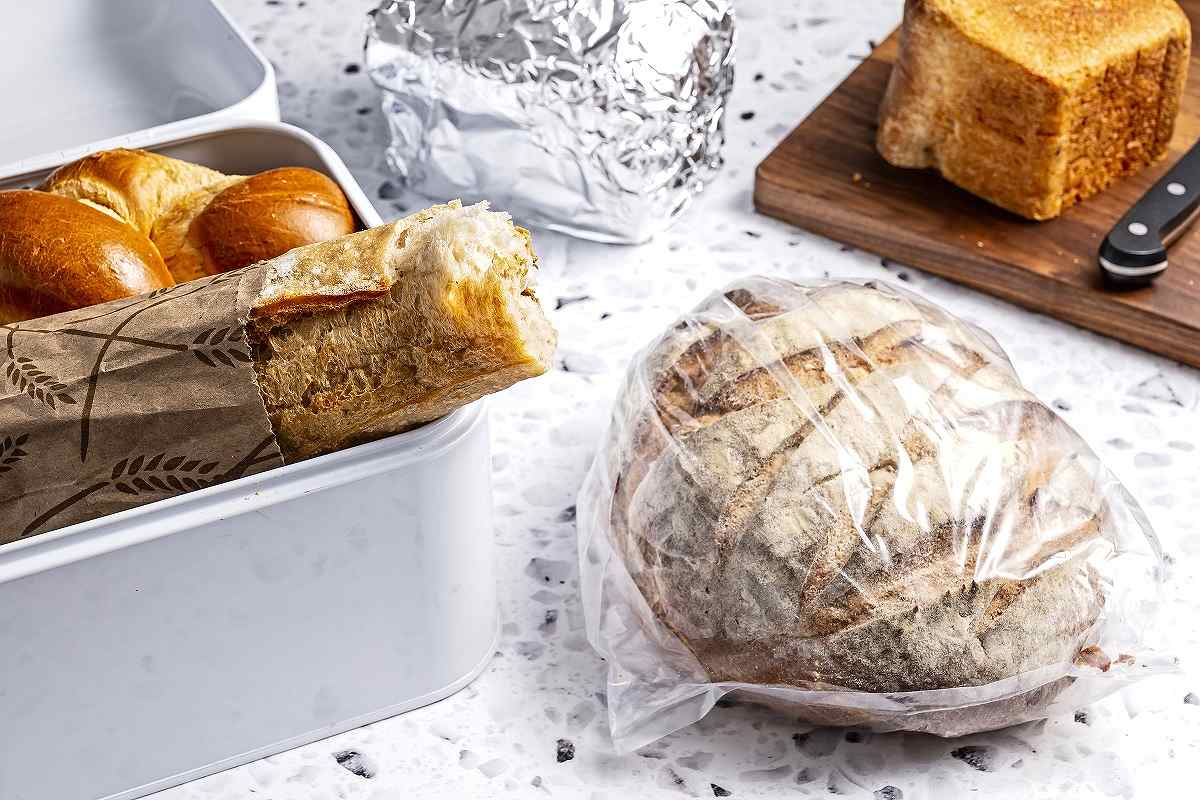
To keep bread at its best, it’s important to remember one rule: Don’t put it in the fridge.
15:09 JST, May 27, 2023
As anyone who jumped on the sourdough bandwagon during the early days of the pandemic can attest, baking bread is a labor of love. So whether you’re baking your own loaves at home or grabbing a boule from your neighborhood bakery, you want to savor every crumb so none of the baker’s hard work goes to waste.
“Nothing beats day one on any of these loaves,” Andrew Janjigian, author of the bread-focused Wordloaf newsletter and an upcoming cookbook, said. But unless you’re just eating fresh-baked bread for your day’s meals – which I wouldn’t judge you for – there’s a good chance you’ll end up with leftovers.
To keep bread at its best, it’s important to remember one rule: “You don’t want to put bread in the fridge ever,” Janjigian said. It’s the worst thing you can do for bread as it speeds up the staling process.
“Don’t refrigerate it unless it’s the only option you have,” former Post staff writer Stephanie Witt Sedgwick wrote in a test of the best methods for storing bread back in 1996. “The refrigerated breads firmed right up. They were really suitable only for toasting.”
Beyond that, it all comes down to moisture control, and the first thing Janjigian considers for storage is what type of bread it is. “A crusty loaf wants to dry out slowly” and “there’s moisture on the inside that is migrating toward the crust, so it’ll keep okay uncovered for a while,” Janjigian said. “Whereas an enriched loaf will just start to dry out from the outside in.”
“My usual method or approach for crusty bread is to cut it and then to store it cut-side down on the cutting board,” Janjigian said. “That kind of keeps that exposed face from drying out.”
You don’t want to wrap the loaves at this point in order to maintain the integrity of the crust. “It’ll soften that crust almost immediately because, like I said, there’s moisture coming from the inside out, and once it hits a barrier like that, then it just sits on the crust,” he said. “You can protect the loaf for the long term, but you’re kind of degrading its early quality by doing that.”
Janjigian will keep bread unwrapped on the counter for a few days, and Witt Sedgwick doesn’t usually recommend more than two. “You may get a couple more days out of a big loaf, but basically, after about 36 hours the bread starts to dry out from the outside in and you’ll have to cut away stale parts to get to good parts,” Witt Sedgwick wrote.
At this point, Janjigian recommends putting the bread in something if you want to squeeze out a bit more life at room temperature. “By that point it’s already kind of lost its shine, and so it’s just kind of keeping it for a bit longer that way.” Janjigian typically uses beeswax wrap or cloth bags lined with beeswax, which he likes because they’re a little breathable, but some alternatives include bread boxes, aluminum foil and plastic wrap. With this approach he can get about a week out of sourdough, which “keeps better than yeasted bread because of the acids in the sourdough.”
With enriched breads – those with a higher concentration of fat, sugar and/or dairy, such as sandwich bread – there’s no crust to try to keep crisp, so all you need to focus on is not letting them dry out. As such, he recommends putting enriched breads into a plastic bag as soon as soon as you’re ready to store them.
“With a plastic bag, there’s the risk of mold, especially if it’s warm,” Janjigian said. “So I just try to race against time and try not to keep loaves around long enough that mold is a problem.” Depending on how hot it is in your kitchen, Janjigian said enriched breads can last between five and seven days.
But with any type of bread, if you know that you won’t be able to finish it within a few days, it’s best to pop it in the freezer as soon as you can. “It serves as a kind of pause button, meaning fresh bread you move into cold storage can come out almost as good as the day you put it in,” Washington Post staff writer Becky Krystal wrote. To freeze bread, portion it however you wish (slices are a good option because they can go directly in a toaster), wrap the portions in two layers of plastic wrap and then a layer of aluminum foil or a zip-top bag.
If despite your best efforts you end up with stale bread in your kitchen, there’s still hope: turn it into breadcrumbs or croutons.
"News Services" POPULAR ARTICLE
-

American Playwright Jeremy O. Harris Arrested in Japan on Alleged Drug Smuggling
-

Taiwan President Shows Support for Japan in China Dispute with Sushi Lunch
-

Japan’s Nikkei Stock Average as JGB Yields, Yen Rise on Rate-Hike Bets
-

Japan’s Nikkei Stock Average Licks Wounds after Selloff Sparked by BOJ Hike Bets (UPDATE 1)
-

Japanese Bond Yields Zoom, Stocks Slide as Rate Hike Looms
JN ACCESS RANKING
-

Japan’s Hopes for Seafood Exports Shot Down in China Spat
-

Keidanren Chairman Yoshinobu Tsutsui Visits Kashiwazaki-Kariwa Nuclear Power Plant; Inspects New Emergency Safety System
-

Japan to Charge Foreigners More for Residence Permits, Looking to Align with Western Countries
-

Japan Exports Rise in October as Slump in U.S. Sales Eases
-

Govt Aims to Expand NISA Program Lineup, Abolish Age Restriction



























